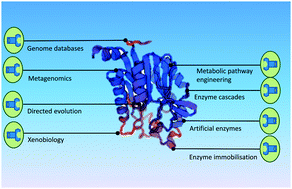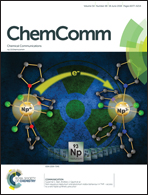The limits to biocatalysis: pushing the envelope
Abstract
In the period 1985 to 1995 applications of biocatalysis, driven by the need for more sustainable manufacture of chemicals and catalytic, (enantio)selective methods for the synthesis of pharmaceutical intermediates, largely involved the available hydrolases. This was followed, in the next two decades, by revolutionary developments in protein engineering and directed evolution for the optimisation of enzyme function and performance that totally changed the biocatalysis landscape. In the same period, metabolic engineering and synthetic biology revolutionised the use of whole cell biocatalysis in the synthesis of commodity chemicals by fermentation. In particular, developments in the enzymatic enantioselective synthesis of chiral alcohols and amines are highlighted. Progress in enzyme immobilisation facilitated applications under harsh industrial conditions, such as in organic solvents. The emergence of biocatalytic or chemoenzymatic cascade processes, often with co-immobilised enzymes, has enabled telescoping of multi-step processes. Discovering and inventing new biocatalytic processes, based on (meta)genomic sequencing, evolving enzyme promiscuity, chemomimetic biocatalysis, artificial metalloenzymes, and the introduction of non-canonical amino acids into proteins, are pushing back the limits of biocatalysis function. Finally, the integral role of biocatalysis in developing a biobased carbon-neutral economy is discussed.



 Please wait while we load your content...
Please wait while we load your content...